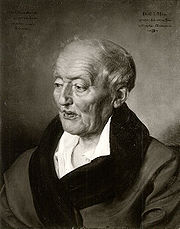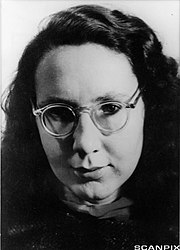Design
Design
Personality
Chart Properties
Your Cross represents the specific theme of your life. This cross embodies your unique potential & the lessons you're here to learn, providing a roadmap to fulfilling your life purpose.
We use the UTC birth time and date to do the calculations required to generate your Human Design chart.
Buy Tokens
Pay as you use, no expiry and no subscription required.Prompt Ideas
Get inspired with some epic prompt ideas.Barry Gibb's Biography
British-Australian pop musician, the eldest brother, lead singer, songwriter and guitarist of the musical family singing group “The Bee Gees.” The brothers’ songwriting team has been the most successful since the Beatles with a stream of No.1 hits in the late ’60s and early ’70s, known most notably as the co-writers and performers of the blockbuster song and movie sound track that defined the disco movement, “Stayin’ Alive” for the film “Saturday Night Fever.” The brothers were inducted into the Rock and Roll Hall of Fame in 1997 and had an album, “Still Waters,” the same year, which sold over three million copies. According to Guinness, the Bee Gees are the most successful family vocal group in pop history, having sold more than 110 million albums over 35 years.
The second of five children born to Hugh Gibb (born 15 January 1916), a bandleader, and Barbara, a former big-band singer, Barry’s early development was stifled by an household accident at the age of 18 months. Accidentally pouring boiling water over much of his upper body, he was burned and traumatized to the point he didn’t cry out loud or speak until the age of three. The family moved to Manchester, England in his early youth, where Barry and his younger twin brothers, Robin and Maurice, wreaked more than their share of mischief. “We broke the law about as much as you can. We lit a lot of fires, burnt a lot of places down, all empty.”
He first became conscious of music at nine when he received a trumpet for his birthday; it was broken the following day in an episode of sibling rivalry. Intrigued by musical sound, he created a banjo-like instrument of boxes and wire, strumming and experimenting. A second-hand guitar was purchased, that was correctly tuned by a neighbor who taught Barry all the chords he knew. “I’m still playing those chords now, with a few extensions of what he taught me,” Barry said. ” I never learned to play the guitar. I can’t even read music now. I could go and learn tomorrow but there’s no reason. We even do our own string arrangements.”
The three brothers displayed an uncanny ability to sing in perfect harmony in their early years, and made their first public appearance at a Manchester movie theater in 1955. After the debut their “whole theme in life was to be discovered. We would stand on street corners and sing. It was the feeling of standing in front of an audience that was so amazing. We’d never seen anything like it. We were very young, but it made an enormous impression. We didn’t want to do anything else but make music. That put a dent to our education to a great extent.”
Hugh’s financial straits, his general dislike of the Manchester climate, combined with the tip of a kind policeman warning of increased possibilities of juvenile arrest, instigated a family move to Brisbane, Australia in August 1958. “Down Under,” a nearby racetrack featured a midway where the boys would sing informally, where one year later race car driver Bill Goode beckoned them to the recording studio and airwaves of his D.J. friend Bill Gates. The singing brothers needed a name, so the combined initials of the two Bills plus the oldest son and leader Barry gave birth to the name B.G.’s, which later came to stand for the Brothers Gibb, then “The Bee Gees.”
Air play of the Brother’s Gibb first recording lead to appearances on variety shows on TV and the stages of resort hotels, nightclubs and bars. Their success made them the family breadwinners with Hugh as their manager and in 1963 the family upgraded to a Sydney suburb, where they got their first recording contract. While the record “The Battle of The Blue and Grey” flopped, Barry worked every weekend except two over a nine year period and signed out of school forever at age 15 to devote more time to his passion of songwriting and performing.
The success of the Beatles beckoned Barry back to his native England to test the musical waters. After arriving on 7 February 1967, they signed on 24 February 1967 with music producer Robert Stigwood, the partner of Beatles’ manager Brian Epstein. Their hit single that same year, “Massachusetts,” sold five million records. When it reached the top of the charts, their success was assured, releasing two albums “Bee Gee’s First,” and “Horizontal” by the end of that same year. Barry’s prolific songwriting, combined with his melodic, self-composed harmonies performed with his brothers led to annual gold albums, successful world tours and movie soundtracks. All three brothers gave a performance together at the MGM Grand hotel in Las Vegas, NV on 14 November 1997; it was their first live concert in the U.S. in more than five years.
Barry’s early marriage to Maureen Bates ended in divorce. He married Linda Grey, the former Miss Scotland, on 1 September 1970. They have five children, Stephen, born 1973, who is following in his father’s musical footsteps, Ashley in 1977, Travis in 1981, Michael in 1984 and Alexandra, born four months premature in late 1991.
Barry maintains two homes, one in Miami and one Tudor mansion on 87 acres west of London where, in addition to his career as a pop music writer and performer, he is an avid student of UFO’s, past life regressions and anything supernatural.
In the autumn of 2005, he and Barbra Streisand reunited to celebrate the 25th anniversary of their successful joint venture, album “Guilty.” The new CD is called “Guilty Pleasures.”
Link to Wikipedia biography
Your Cross represents the specific theme of your life. This cross embodies your unique potential & the lessons you're here to learn, providing a roadmap to fulfilling your life purpose.
We use the UTC birth time and date to do the calculations required to generate your Human Design chart.






